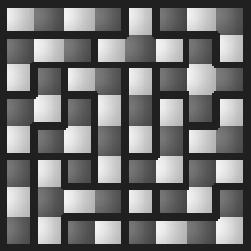| ENG RUS | Timus Online Judge |
1693. Задача ЛойдаОграничение времени: 1.0 секунды Ограничение памяти: 64 МБ Сэм Лойд — крупнейший американский мастер головоломок. Одна из самых известных его головоломок — это «Игра в пятнадцать». Также он известен как автор множества шахматных задач и задач на разрезание. Вам предлагается решить задачу Лойда про разрезание шахматной доски. Задана шахматная доска размером n × n. Требуется распилить её на наибольшее количество частей так, чтобы любые две части были различны. Каждая часть должна состоять из одной или нескольких клеток и представлять собой связную по стороне фигуру. Части, отличающиеся только поворотом, считаются одинаковыми. Так, существует две одноклеточных части: черная клетка и белая клетка, и только одна часть, состоящая из двух клеток. Вот одно из решений оригинальной задачи Лойда про разрезание обычной шахматной доски 8 × 8 на 18 различных частей:  Исходные данныеВ единственной строке содержится целое число n, длина стороны доски РезультатВ первой строке выведите максимальное количество частей, на которое можно разрезать доску. Далее выведите само разрезание: n строк по n маленьких латинских букв в каждой. Каждая часть должна состоять из одинаковых букв, при этом одну и ту же букву можно использовать для обозначения нескольких частей, но любые две соседние части должны состоять из разных букв. Если существует более одного оптимального разрезания, то можно вывести любое. Пример
Автор задачи: Сэм Лойд, Игорь Чевдарь Источник задачи: Ural SU Contest. Petrozavodsk Winter Session, February 2009 Метки: сложнейшая задача |
